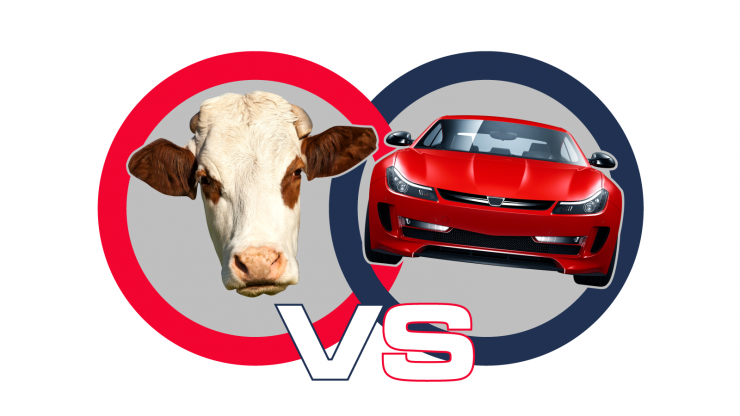Carbon Negative Cows
A fundamental part of regenerating our farm lands is getting animals back onto the land. In agriculture the invention of synthetic fertilisers resulted in animals being removed from farms and placed on concrete and farm fertility being provided from external sources. In a previous blog we mentioned some of the mounting bills that still have to be paid from that decision. We cannot afford to produce our food in its current environmentally friendly and unsustainable way, we have to produce our fertility in a way that doesn't have these massive environmental externalities. In order to change this crop fields and orchards must once again have animals rotated through them and grasslands need to be grazed as they exist in a symbiotic relationship with grazing animals. And in order to do this we need to continue to farm with animals. However we are constantly told we cannot farm with animals as they are bad for the environment.
Animal agriculture, particularly cattle have been under a concerted attack from the various anti meat movements for many years. What started off as an animal rights campaign quickly morphed into a climate change campaign which was given a major boost when the FAO of the UN released its Livestock's Long Shadow report in 2006. Since then the figures sated in that report have been used and abused in multiple places. Over time they came under criticism from numerous academics and subsequently the authors of the paper have backed down on various points. But the damage was done and the EU started talking about taxing red meat production.

There are two significant problems with science behind the greenhouse gas effects of cattle. Both are dealt with in the attached peer reviewed paper.
Firstly our approach to things is so linear that we generally miss the bigger picture and in the case of greenhouse gasses our approach is all about emissions and reducing emissions. Now this works fine in situations like fossil fuels which are a one way flow, but in the case of natural emissions, like those from cow burps, this is not the case. These emissions are part of a carbon cycle not just a one way emission. Had that cycle not been balanced over the last 40 million years when grasses and ruminants evolved together and took over much of the planet there would have been an associated rise in atmospheric carbon. But there wasn't. Because cow burps and manure are not the same as pollution coming out the exhaust of a car, they are a natural cycle functioning in harmony with other natural cycles if allowed.
The second problem is the determination of a CO2 equivalence for methane that did not take into account the short lifespan of methane in the atmosphere. As a result methane has been historically been worked out as having 28 times more warming effect than CO2, a figure which drives up ruminant emissions. As the attached paper points out the more recently calculated figure of 8 is a better approximation.
Couple these two significant changes together with cattle being raised on healthy grasslands and cattle production ends up being carbon negative.

This paper does not give all animal production a free pass. If your cows are going to be dunging on concrete or degraded soils with limited soil biology they are not going to be balanced in their carbon cycle.
It's time to focus on agriculture's real pollution problems of factory farming and nitrogen fertiliser dependancy and leave the cows and other ruminants grazing grass alone.
Click here to access the full paper:
https://www.sciencedirect.com/science/article/pii/S0308521X21002390
or
Download the paper here:
